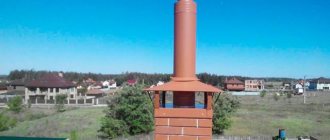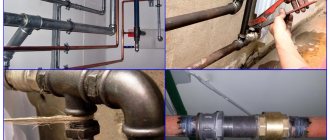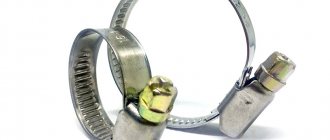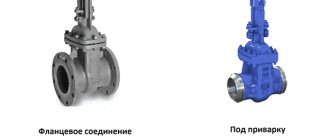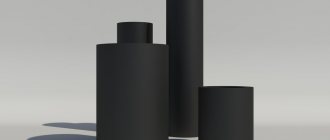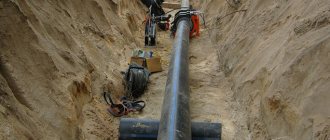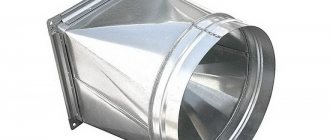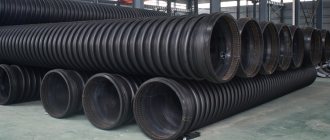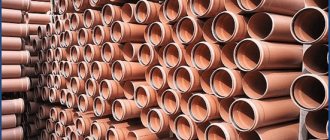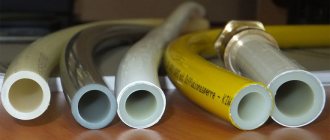Currently, plastic pipes are increasingly replacing similar products made from other materials. HDPE pipes are in great demand today. They can be used to create almost any communication. The increased strength of pipes of this type is due to the fact that low-density polyethylene (HDPE) is used as a raw material for their production.
Polyethylene pipes for indoor and outdoor use
Areas of application
Polyethylene (PE) pipes make up about 73% of all plastic pipes produced in Russia.
They find application in:
- Laying external and internal water supply networks.
- Construction of sewerage systems, stormwater drainage.
- Creation of gas pipelines.
- Installation of irrigation and reclamation systems.
- Carrying out telecommunications.
- Repair and replacement of worn out communications of any kind.
HDPE technical pipe.
used for internal and external installation, produced according to TU 2248-001-09801575-2010 .
Technical HDPE pipe has proven itself exclusively on the positive side. HDPE pipes have virtually no disadvantages inherent in pipes made from other materials.
Technical polyethylene pipes are used for:
- protection of power and low-current electrical cables from mechanical damage
- when hidden in the ground or poured into monolithic concrete
- for external and internal non-pressure pipelines
- formation of voids and channels in the manufacture of reinforced concrete products
- temporary tubular gardening structures and reclamation systems
- pipeline systems for drainage and free-flow transportation of media chemically neutral to polyethylene
- installation of fiber optic internet cables
- irrigation systems
- free-flow sewer outlets and watering hoses
- in landscape design for automatic watering systems
Technical HDPE pipes are not allowed to be used in pressure pipelines, including domestic and drinking water supply.
The full list of HDPE pipe diameters supplied in accordance with TU 2248-001-09801575-2010 pipes looks like this:
- HDPE pipe 50 mm polyethylene technical free-flow wall 2.0 mm, 2.4 mm, 4.6 mm
- HDPE pipe 63 mm polyethylene technical free-flow wall 2.5 mm, 3.6 mm, 5.8 mm
- HDPE pipe 75 mm polyethylene technical free-flow wall 2.9 mm, 4.3 mm, 6.8 mm
- HDPE pipe 90 mm polyethylene technical free-flow wall 3.5 mm, 5.1 mm, 8.2 mm
- HDPE pipe 110 mm polyethylene technical free-flow wall 4.2 mm, 6.3 mm, 10 mm
- HDPE pipe 160 mm polyethylene technical non-pressure wall 6.2 mm, 9.1 mm, 14.6 mm
- HDPE pipe 225 mm polyethylene technical non-pressure wall 8.6 mm, 12.8 mm, 20.5 mm
The most commonly used technical HDPE pipes are: HDPE 110 pipe, HDPE 160 pipe with a medium-light wall type.
Supplied in 12 m lengths.
Specifications
Polyethylene pipes are designed to transmit gases and liquids at temperatures from -40 to + 40 C. At higher temperatures, their service life is significantly reduced.
They are able to stably withstand operating pressure from 2.5 to 16 atmospheres.
The main dimensional parameter of PE bends is diameter. It varies from 10 to 2000 mm.
The thickness of the walls plays an important role - the depth of laying pipelines underground depends on its size, especially in places where vehicles move.
HDPE pipe for Gas.
A gas pipeline made from HDPE pipes is a special category of pipelines, which is primarily distinguished from, for example, water supply or sewerage systems by a special degree of increased danger. Strict requirements are imposed on the installation and operation of gas pipelines, especially in places where people live.
If in the recent past only metal pipes were used for gas pipelines, then with the advent of polyethylene pipes, the situation has changed. Today, polyethylene pipes are used more and more for gas pipelines.
Of all polymer products, polyethylene pipes for gas occupy the largest share in percentage terms - up to 70%. This fact suggests that polyethylene PE pipes meet the highest quality and safety requirements.
Requirements for polyethylene pipes (HDPE) for gas pipelines
Mostly, polyethylene gas pipes of class PE 100 with a standard dimensional ratio of SDR 17.6 and SDR 11 are used. It is pipes of class PE 100 that are best used for gas pipelines.
For construction and repair, polyethylene pipes for gas pipelines with diameters from 20 to 400 mm are used. The color of polyethylene gas pipes is black with a yellow stripe.
Polyethylene pipes are mainly used for low and medium pressure gas pipelines, that is, they can be fully used for household gas lines. These technical conditions are specified in GOST, SNiP and DBN.
Features of the operation of polyethylene pipes for gas pipelines
Despite all the positive qualities of polyethylene pipes for gas pipelines, there are a number of limitations that darken the joy of consumers (builders).
- polyethylene pipes for gas pipelines are used only for underground installation, and entry into houses (residential premises) and internal wiring should be carried out only with steel pipes;
- the use of polyethylene pipes for gas pipelines is prohibited in areas where the average air temperature reaches below 450 C;
- It is prohibited to use polyethylene pipes for gas in areas with seismicity of 6 points or higher;
- It is prohibited to lay gas pipelines from PE pipes in places where it is planned to construct crossings over any obstacles;
- It is prohibited to use polyethylene gas pipes for high-pressure gas pipelines of categories I and II within populated areas.
Production Features
The simplest and most common method of producing polyethylene pipes is extrusion. On a closed conveyor, the molten granules enter the extruder, from where they are squeezed out through its head, acquiring the required shape.
Next, the workpiece undergoes vacuum calibration at a certain pressure, based on the results of which the final shape of the product is formed.
If low pressure was used, pipes are made from low-pressure polyethylene (HDPE); if high pressure is used, pipes are made from high-density polyethylene (HDPE).
Another type is bends made of cross-linked polyethylene.
Non-pressure technical pipe PE and its difference from a pressure pipe.
Pipes made of extruded low-density polyethylene are very popular, the demand for them is constantly growing, as more and more consumers evaluate their performance characteristics in relation to their low cost. PE pipes are characterized by low installation complexity, resistance to aggressive solutions and liquids, and a longer service life. This type of pipe products is reliably protected from mechanical corrosion.
Pressure HDPE pipes made from primary raw materials.
The range of pipe products includes pressure and non-pressure technical pipes, which are usually used for the installation of industrial and individual sewage systems and drainage structures. The advantage of pressure pipes is their design features, which allow them to withstand any hydraulic shock and ensure the transportation of contents under high pressure.
Pressure pipes are made from primary raw material PE 100; their cost is almost twice as high as pipes made from recycled polyethylene, and sometimes even higher. Pressure pipes have the required strength and are used in industrial and urban sewer and storm drains.
Non-pressure technical PE pipes made from recycled materials.
Non-pressure PE technical pipes can be used in apartment and individual buildings for sewerage installations. Systems can be pressurized provided they maintain a working pressure range of up to 0.15 MPa. Their low price made laying cable and optical fiber much cheaper and faster. It is the non-pressure technical pipe that is used for installing cable systems in modern realities.
Various shapes and diameters of technical pipes.
Non-pressure technical pipes made of recycled polyethylene are supplied by the company in different standard sizes with a diameter of up to 160 mm. Despite the use of recycled materials, improved production technology makes it possible to produce high-quality technical pipes with performance characteristics that are practically not inferior to pressure pipes.
Types and assortment
In accordance with GOST 18599-2001, developed on the basis of international standards, today polyethylene bends are divided according to their ability to withstand long-term pressure of the working environment.
This indicator is expressed in MPa and is abbreviated MRS.
Based on its values, polyethylenes are divided into classes:
- PE 63.
- PE 80.
- PE 100.
The range of PE pressure pipes for water supply systems, sewerage systems and process lines includes nominal dimensions of external sections (from 10 to 2000 mm), wall thickness (from 2 to 118.5 mm) and pressure.
According to the permissible operating pressure, they are divided into light, medium-light, medium, and heavy.
Light ones are designed for lines with a pressure of 2.5 kgf/cm2, heavy ones - for 10 kgf/cm2. Products of the medium type are used at internal pressures of up to 6 kgf/cm2, and of the medium-light type - no higher than 4 kgf/cm2.
Gas pipes are produced with sections from 16 mm to 630 mm in accordance with GOST R 50838-2009.
Application of pressure polyethylene pipes
Pressure pipe products can be used for the installation of pipelines for a wide variety of purposes:
- hot and cold water supply,
- sewer and drainage systems,
- gas supply,
- irrigation and water distribution systems,
- transportation of substances in industrial premises,
- protection of communication lines and electrical networks.
In addition to installing new pipelines and completely replacing old ones, pressure pipes are used to restore pipelines without dismantling.
Advantages and disadvantages of polyethylene products
The advantages of PET pipes are as follows:
- They are much stronger and more resistant to damage than their non-pressure counterparts. Can be used in deep underground installations, including under the roadway.
- Capable of withstanding high overpressures.
- Not subject to rust.
- PET pipes are completely free of blockages and overgrowing of channels.
- They have a light specific weight, good weldability, and are easy to install.
Experts call the disadvantages:
- Flammability of the material with the release of toxic substances.
- Exposure to ultraviolet rays (except for PEX - cross-linked polyethylene).
- High linear expansion under temperature influence.
Markings and diameters
PET pipe products are available in black with stripes:
- Gas ones are yellow.
- Tap water - blue.
Gravity outlets do not have color stripes.
Gas lines can be yellow or orange.
The text of the marking according to GOST must contain:
- Purpose (drinking water, technical).
- Manufacturer's names.
- Pipe class and its SDR.
- Standard sizes.
- Date of manufacture.
The range of diameters of PET products includes sizes from 10 to 2000 mm. Small sections (up to 4 cm) are used in water pipes. For pipeline risers, more substantial dimensions are used - up to 16 cm.
Large sections are used in industrial and utility networks.
Density of polyethylene
This indicator characterizes the degree of rigidity and tensile strength of the material, its resistance to the penetration of chemical elements.
It is indicated on the product by numbers after the abbreviation PE:
- PE32.
- PE63.
- PE80.
- PE100.
The first two types are used only in non-pressure networks.
PE100 is by far the highest quality material in terms of strength.
Diameter of polyethylene pipes and what is SDR
The outer diameter appears in the marking of plastic outlets. The internal one is calculated by subtracting the wall thickness, doubled, from the external size.
Following the cross-section are placed the abbreviation SDR and numbers showing the ratio of the diameter and wall thickness of the product. The lower this index, the thicker the wall, which means the stronger the product itself. For example, bends with a density of PE100 and an SDR coefficient of 11 are used for large external loads underground and increased internal operating stresses.
Pipe series and pressure rating
An important characteristic is the series of pipe products - S. Its value expresses the ratio of the design pressure value to the maximum operating voltage that the product can withstand.
Calculate using the formula:
S=(SDR – 1)/2
Knowing the pipe material and its series, you can determine the nominal pressure according to GOST 18599. This refers to the water pressure at 20 C, with which the product will last 50 years.
For example, for a PE 100 outlet of the SDR 9, S 4 series it is equal to PN 20 (20 atmospheres).
| Name of polyethylene | Pipe series | ||
| SDR 9 S 4 | SDR 7.4 S 3.2 | SDR 6S 2.5 | |
| Nominal pressure PN (bar) | |||
| PE 63 | PN 12.5 | (PN 15) | PN 20 |
| PE 80 | PN 16 | PN 20 | PN 25 |
| PE 100 | PN 20 | PN 25 | – |
Regulations
The product usually indicates the standard to which it conforms.
PE pressure pipes for water supply and sewerage with a nominal pressure of up to 25 bar and a temperature range from 0 to 40 degrees are produced in accordance with GOST 18599-2001.
Gas pipeline analogues - in accordance with GOST R 50838-2009.
Example of PE pipe marking
The marking of PE 100, SDR 21, series 10 pipes, with an external cross-section of 110 mm and a wall thickness of 5.3 mm, for drinking water supply, manufactured in June 2021, is as follows:
PE100 SDR21 S10 110×5.3 drinking GOST 18599-2001 06.17
Safety requirements
During use and storage, polyethylene products do not pose a danger to humans. It does not emit substances harmful to it, production waste is not toxic, and can serve as secondary raw materials for processing.
Acceptance rules
Products are released and received in batches. They are formed from bends of the same standard size, type and material. They are produced on one conveyor belt and documented in a single document.
The number of meters of products in one batch is limited depending on their sections.
So, if for pipes with a diameter of 32 mm the maximum size is 15 thousand meters, then for bends with a cross-section of 110 and 160 mm - 5000 m.
Test methods
Manufactured products are subject to production testing for compliance with standards. For this purpose, acceptance and periodic tests are carried out, the methodology of which is described by GOSTs.
When conducting periodic tests, one specimen is selected from each of 4 groups of products, combined by outer section dimensions. The test results become valid for the entire group of diameters.
Selection of samples for acceptance inspections is carried out by random sampling from the batch.
If the results are negative, repeat tests are performed, doubling the number of samples tested. If they are also unsuccessful, the batch is rejected.
Transportation and storage
Transportation of PE pipes is carried out by any type of transport suitable for this operation. In this case, they are guided by the rules adopted by this carrier.
In railway covered cars, the size of transported products is limited to 5.5 m, the weight of coils and packages does not exceed 1.25 tons.
When storing polyethylene bends, it is necessary to comply with the conditions of GOST 15150. As a rule, the storage period is limited to one year, after which a check for certain indicators is required.
manufacturer's warranty
The manufacturer guarantees product compliance with state standards, provided that the consumer complies with all rules for handling the product.
The warranty period is two years.
It is important for buyers to promptly complete and retain documents confirming compliance with these rules.
Plastic technical pipes for sewerage.
Plastic technical pipes for sewerage are produced by extrusion under low pressure of granules from recycled HDPE polyethylene, resulting in high density of the pipe walls and strength, as well as unprecedented tensile strength of the pipe web. The use of recycled materials allows us to significantly reduce the cost of our products, which are not inferior in quality to foreign samples of sewer pipes, but are significantly lower in cost.
Inexpensive and high-quality sewerage is possible.
A distinctive feature of plastic sewer pipes is their simplicity and low installation cost. In apartments or individual houses, a sewerage system from HDPE pipes can be made independently if you have the skills. In non-pressure systems, a slope is desirable. They ensure the transportation of liquids with a maximum pressure of up to 0.15 MPa, which is quite enough for sewage systems.
Key features.
To assess the advantages of this type of pipe, it makes sense to give several key characteristics of sewer systems made from HDPE pipes:
- Strength and durability;
- Biological inertness, resistance to pollution and chemical reagents;
- They do not form blockages when meeting the requirements in non-pressure systems and are easily cleaned of any contaminants;
- Anti-corrosion, which sets these products apart from cast iron;
- Compliance with strict sanitary standards.
Plastic sewer pipes are produced in different sizes with a cross-sectional diameter up to 160 mm inclusive. We often produce custom-made pipes with individual cross-sections and shapes in our production facility. The products are manufactured in the Moscow region, and pick-up is also possible here. Delivery is carried out to all regions of Russia.
Recommendations for selection
In order not to make a mistake in choosing a product, you need to have a clear idea for what purposes it is needed and under what conditions it will be used.
The main parameters when choosing are:
- Pipe working pressure
- Its throughput (sectional dimensions).
It is important to purchase products from a reliable manufacturer, which includes leading domestic ones, OJSC Kazanorgsintez, Tekhstroy and others.
Connection methods for pipeline installation
During the assembly or repair of pipelines, PE pressure pipes are joined by two types of connections: detachable and permanent.
Detachable methods that allow you to dismantle joints include:
- Compression, used for bends with a cross-section of 50 mm or less, as well as for joints with bends made of other materials.
- Flanged.
- Collet type with crimp and rubber sealing ring, designed for pressure up to 25 atmospheres.
Pipes with a diameter of 63 mm or more are usually joined with permanent joints using welding:
- Butt method.
- Using a coupling with special heaters.
- By diffusion method.
Butt welding
Pressure PE pipelines are assembled mainly by butt welding with a heated tool. It provides a reliable connection that is not inferior in strength to the polyethylene pipes themselves. The use of this method is possible only with special equipment and qualified personnel.
The ends of the pipes to be welded are placed in the apparatus, cleaned until they are completely identical and heated to a pre-calculated temperature. As the ends melt, remove the heating disk and quickly close the workpieces together. After 5-10 minutes the connection hardens and becomes serviceable.
The method is used for laying external pipelines, both in an open trench and when trenchless replacing an old pipeline with a new one.
The disadvantage is the inability to use the equipment in cramped spaces.
Diffusion welding
In certain cases, it becomes necessary to weld a connecting piece to the pipe. Then they resort to diffusion welding.
The surfaces of the end of the pipe and fitting are heated with a special soldering iron, and then the elements are inserted into each other and squeezed tightly by hand. After cooling, a reliable joint is obtained.
Another option for the diffusion method is joining pipes by socket welding. The socket may already be present on the pipe at the factory, or it can be made by welding an ordinary coupling to the outlet. The welding installation technology is similar to that described above.
Use of polyethylene couplings with built-in electric spiral
Along with the butt method, socket welding with embedded electric heaters is also the main type of welding joints for PE bends with a small cross-section. The spiral coupling is used for welding pipes with different wall thicknesses and different SDRs; when working in hard-to-reach places.
The ends of the pipes are also cleaned before welding, inserted into the coupling and current is supplied to its terminals. By heating the spiral, the polyethylene melts at the ends of the connected branches and a strong welded joint is obtained.
Flanged
Of the detachable connections, the most common is the flange method.
It is used:
- On pipes with a cross section of 63 mm.
- When joining HDPE pipes with metal material.
A loose metal flange is put on the PE outlet, then a special bushing with a collar is welded to the end. This part prevents the flange from coming off the pipe. The flange of the other connected pipeline segment is bolted to it.
Welded connection of polyethylene pressure pipes
For these purposes, you can use one of two methods:
- welding using a heating spiral;
- butt option.
In the first case, a high-resistance spiral is used, which is located in the coupling. In this case, the joined parts are heated using electric current to the welding temperature. The heated elements cool down after joining and form a single structure.
The second method involves placing a PE pipe and connecting fitting on a heating element located on the welding machine. After heating at a specific temperature for a certain time, they are removed and combined with little effort. After joining to a stationary position, the connected pipe and fitting are left until they have completely cooled.
Installation features
It is recommended to lay polyethylene pipelines:
- External networks are underground, since above-ground installation will require additional resources for heat and sun protection of PE products.
- Internal wiring - in heated rooms.
Ground laying of PE bends is carried out on movable and fixed supports, taking into account their linear thermal expansion. Brackets and hangers are used as fasteners.
In underground installation, both the trench method and trenchless methods are used: pulling a pipe into a pipe, puncture, destruction of the old channel and simultaneous replacement with a new product.
How to lay water supply and sewerage
The diameter of the underground part of the water supply depends on its length and the water pressure from the source. The lower the pressure, the larger the channel cross-section should be.
A trench for a water or sewer network is dug to a depth below the freezing point, but not less than 1 meter.
A cushion of sand or fine gravel is made at the bottom of the ditch to prevent deformation of the channel.
Next, the pipeline connections are installed.
The laid and leak-tested water pipeline is covered with loosened soil.
When laying a sewer system, it is important to meet the basic condition: build a trench with a slope of at least 1 cm per meter of network.
Features of installation of PE pressure pipes
Before installation, polyethylene products are inspected to identify defects and contamination. Scratches and other minor damage should not exceed 10% of the minimum possible wall thickness of the bends.
The bends are cut into sections with a special pipe cutter, which allows for smooth cuts, which is very important when assembling the main line.
Main lines of small sections up to 50 mm, when butt welding or connection through flanges are impractical, are assembled using compression fittings.
Electric-welded couplings are used for joining long sections of PE pipes with a cross-section of 25-110 mm, when installed in limited space, for tapping into existing highways.
Features of PE 100 RC pipes produced by IKAPLAST
The basis of the product is a pipeline made of PE 100 RC polyethylene. This material has increased resistance to pressure changes, cracking and tensile rupture, and is not subject to corrosion.
The third type of pipe consists of a base made of PE 100 RC and a protective sheath made of high-strength PP material. The RC marking stands for “Resistance to Crack”, which means “resistance to cracking”.
Due to the combination of the qualitative characteristics of these two materials, pipes of this series are often laid using both trench and trenchless methods, by pulling, without sand backfill, especially in complex soils with an abundant presence of solid foreign formations (stones, roots, fragments, etc.).
